“Everyone has ideas. But ideas are worthless unless you do something with them”
In his latest Four Corners column, which profiles designers from the African Diaspora, Jon Daniel talks to graphic novel artist and writer Woodrow Phoenix.
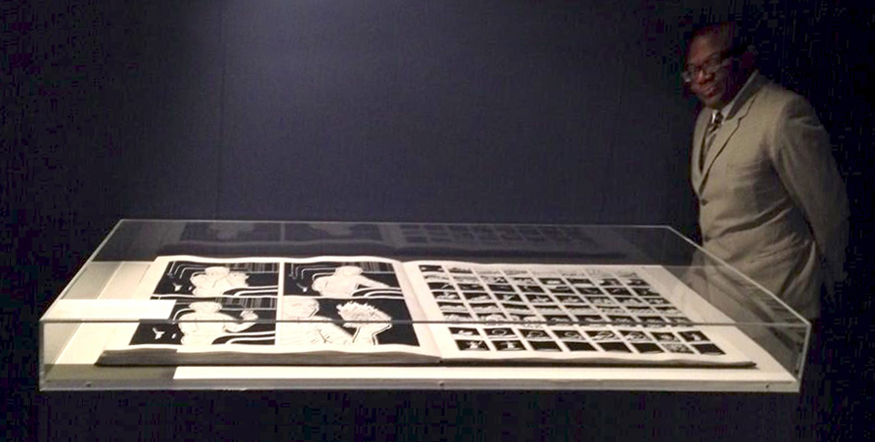
I first met this month’s profiled creative in Soho, London a few years ago when I wandered into Gosh book store in Berwick Street. Neatly attired in his polo neck and tweed suit, he presented an intriguing character that I was later to find out, was as every bit as fascinating as his graphic novels and comic strips, after we struck up a conversation. Well today, I’m proud to present him as the star of his own story and introduce to you, the one and only: Woodrow Phoenix.
What’s your background?
My parents arrived here from Guyana around 1958, starting off in west London but eventually moving to south London because it was impossible to buy a house where they were. Nobody would sell a house to black people. The neighbours wouldn’t like it. The only way they managed to buy the one they did get was to have my godfather, who was white, pretend to be the buyer.
I grew up in Brockley with four sisters. My parents worked hard to create a stable and warm environment for us; they were creative people (for a while they ran a boutique called Phoenix Fashions) who encouraged our creativity. One of my sisters trained as a ceramicist, another as a hairdresser. The oldest is a psychology professor. So I’m not quite the odd one out.
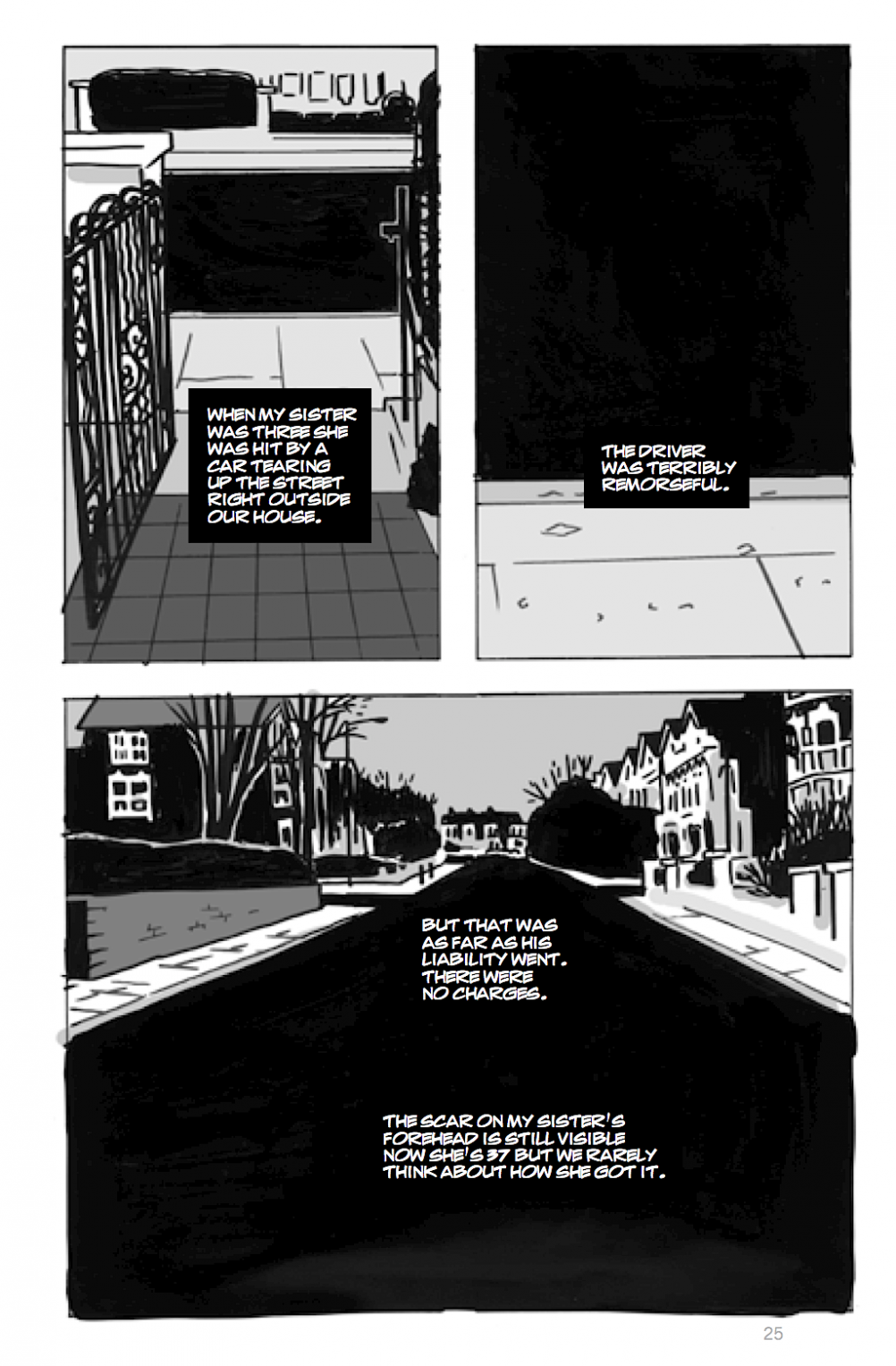
How did you get started in graphic art?
My first professional work was lettering comic strips. Sometimes ghosting an existing style for adaptations or translations by foreign artists, but mostly just handwriting balloon and caption text for many companies producing comics in Britain. Good lettering is a kind of drawing, as satisfying to me as picturemaking, which is probably why I studied typography rather than Illustration at university.
I still sometimes design typefaces now for specific jobs, and several of my fonts are licensed to font distributors in the USA. After doing that for a while, and also doing editorial illustration for magazines like Radio Times, I wanted to write and draw stories myself. I eventually made books and comics for the UK, US, French and Japanese markets.
Some highlights: The Sumo Family, a newspaper strip in The Independent on Sunday; The Liberty Cat, a mystery/detective series for Kodansha Japan’s Comics Morning magazine; Net Worth, an interactive television cartoon; Sugar Buzz!, a collaboration with writer Ian Carney that led to deals with both Walt Disney and Cartoon Network; Donny Digits, an adventure strip for children that was published in The Guardian; and Rumble Strip, a book described by The Times as “One utterly original work of genius. It should be made mandatory reading for everyone, everywhere”.
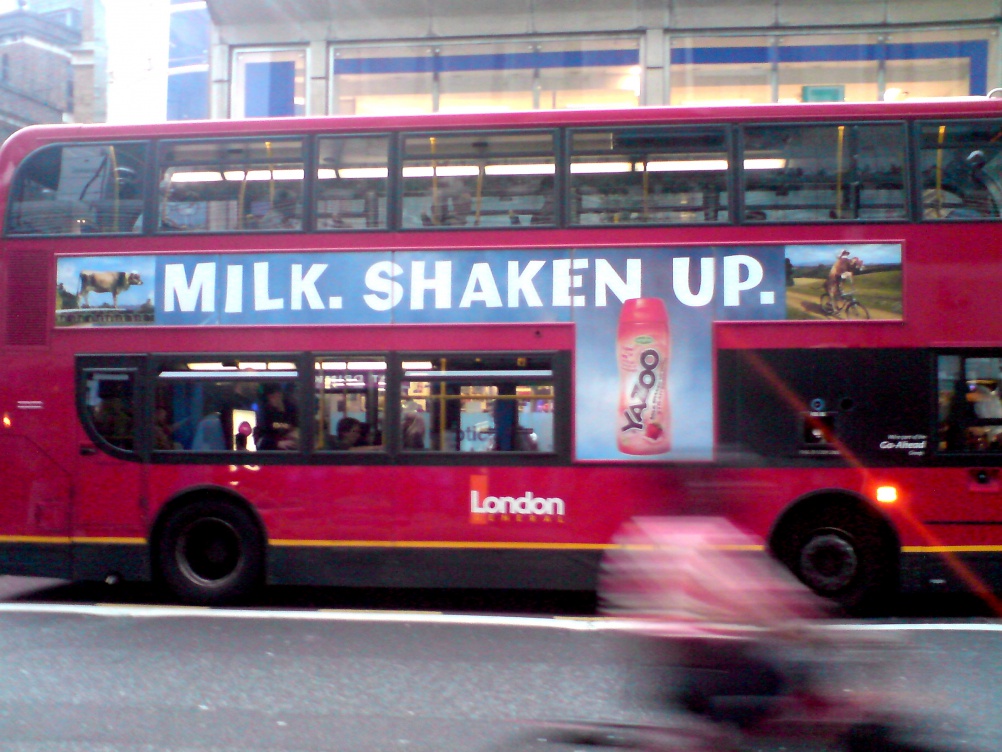
What challenges did you face in getting into the industry and achieving your ambitions?
The main challenge I faced as a newbie illustrator/designer/comics creator is sadly not that different from the main challenge I still face, which is getting people to pay fairly for the work they ask me to do for them. So many companies and individuals think because what you are doing looks like fun they don’t need to pay you much (if any) money for it. You can just knock out something for them in between those other jobs you might be doing – hey, it’ll only take you 20 minutes.
When you start out people expect you should work for them for free because it’s good for your portfolio, it’s great experience, they’re doing you a favour by showcasing your stuff etc. And after you’ve got a reputation and a track record, people expect that you should “help them out” because you’ve arrived and therefore you can afford to donate some of your time or talent. It’s frankly astonishing how often I say no to people asking me for free work when they intend to use it to make money in some way, through fundraising for a charity or drawing attention to some situation that they think needs the boost of some great images, or even just doing them a favour. And when I point out that they are getting paid, the printers are getting paid, everyone else connected with the product is getting paid except for the person they expect to supply the content… they still fail to see the problem.
Or if they do see it, they get angry and embarrassed that I’d be so crass as to call them on it. So there’s that. I always expected this problem would one day be solved (when the tools of production became cheaper and people began trying it for themselves only to appreciate how hard it is to make good work and what its true value is) but no. It didn’t work out that way. At this point, I expect to be dealing with this intermittently for the rest of my life.
Comic strips are a ridiculously labour-intensive way to tell stories. The time it takes to make the simplest narrative is huge and sometimes I really wish that I had been struck by lightning instead of the urge to work in this medium, but hey. Here I am. The biggest challenge in making comics is to tell stories for the 98% of people who don’t go into comic shops. Convincing them that there is something in this medium for them, and that they will understand it and they will find it relevant to their lives. It’s particularly difficult when most publishers and most readers are fixated on genre as the answer to everything. Since this is the medium that I’m stuck with I have to try and expand the boundaries, make it work in a more inclusive way.
Rumble Strip (Myriad Editions, 2008) was an experiment and Nelson (Blank Slate Books, 2011), the collective graphic novel which I co-edited and designed, was too. Both of them are unclassifiable to some extent but as soon as a reader picks them up, they understand them because the book creates a context of its own. It’s very hard to sell work like that because you can’t explain it in one sentence. So it takes a long time for it to catch on, people have to read it, tell their friends. Luckily, I have patience. I need it.
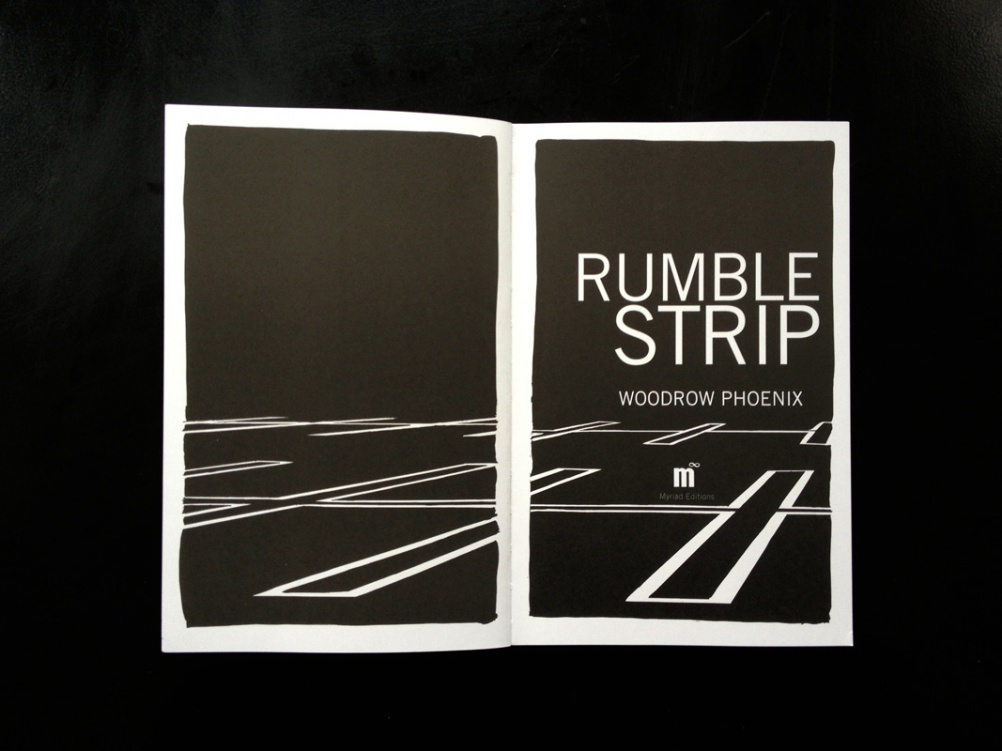
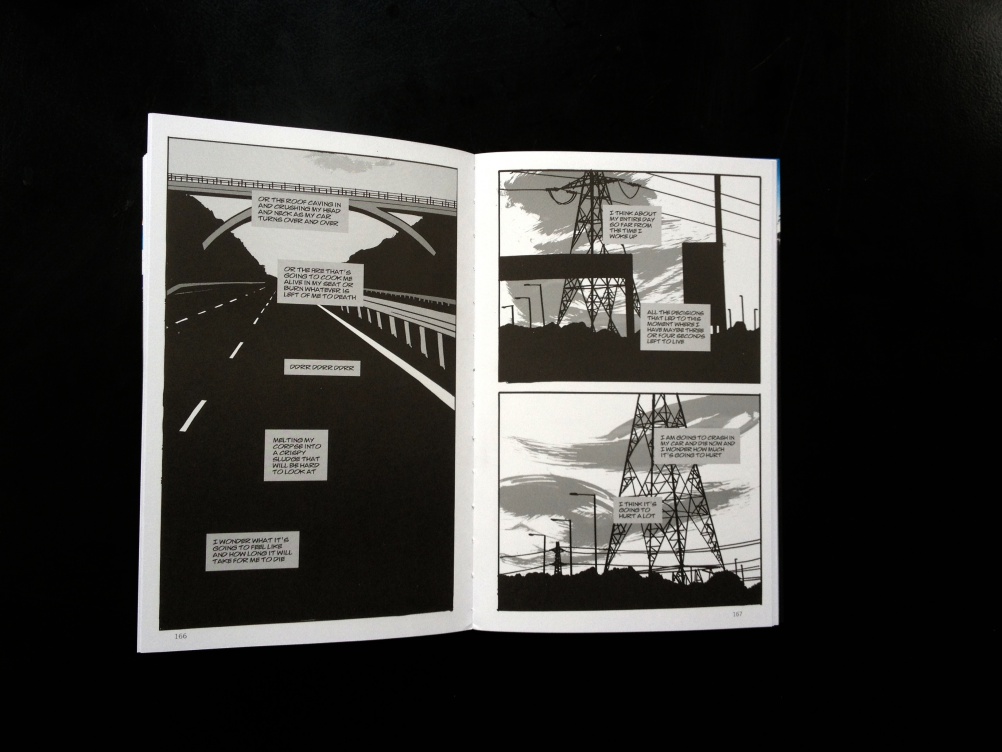
Who and/or What are your greatest inspirations and influences?
Music. I listen to music all day while I work, so that’s a lot – from Public Enemy, Bernard Herrmann and Mr Oizo to Japanese glitch or Morton Feldman. I’m often inspired by animation because the drive to reduce a design to as few lines as possible results in elegant and ingenious solutions when it works. I’ll notice: “Hey, that’s a great nose!” Or: “Hmmm, interesting way to treat fabric”.
I’m always observing people because inspiration can come from anywhere. Haircuts. The unpredictable clothing combinations and colours people choose. The way someone sits on a train. Body shapes. My favourite comics creators are probably Jaime Hernandez, Lynda Barry, Tezuka, Miyazaki, but really I’m inspired by anybody who can create a compelling reality between two covers.
I’m also regularly inspired by Ilya and JAKe (coincidentally they both have single name IDs like Pharrell or Usher), the two talented humans I share a studio with. One day they’ll be legendary.
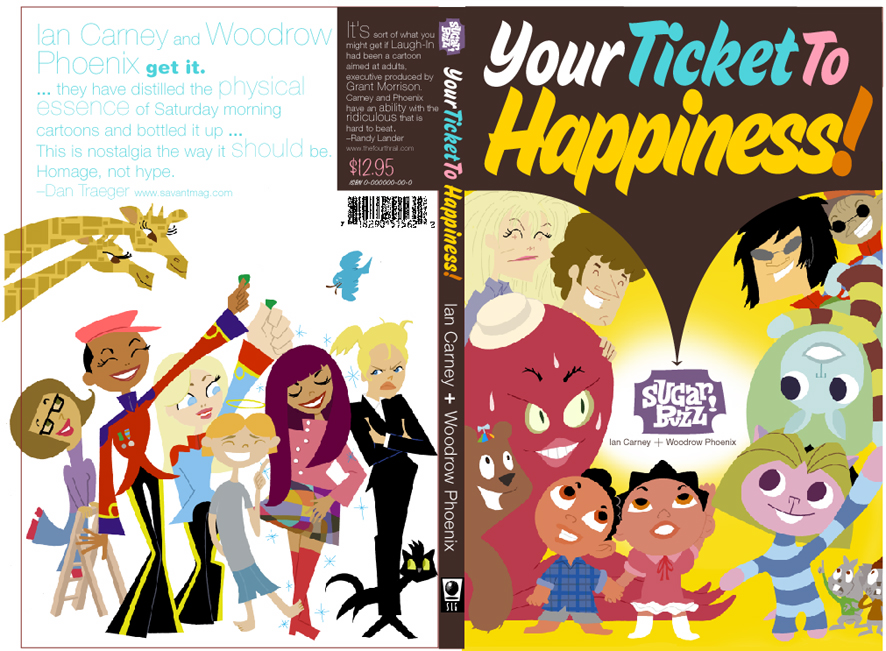
What is your best piece of work or the project you are most proud of?
I always see the flaws when I look back on my work, places where the idea could have been better expressed, I could have drawn something more attractively or sharpened the message. Any number of tiny things that got lost on the way to the finish line. But my very lovely and wise partner Bridget reminds me not to lose sight of the 90% that succeeded, and she’s right. Being self-critical is how you keep improving, but you should celebrate the good stuff too.
What I find most gratifying is when people tell me that something I have made has touched them or been useful to them in some way. I feel compelled to make work that comments on social or cultural issues, that has something to say about what I see around me and if it’s connecting with its audience then I haven’t wasted my time – or theirs. Mostly I’m just proud of following through and completing projects that people doubted the value of until they saw the final product. The crazier the idea, the more important it is to get it done so that you can prove it works. So if I’m going to name one thing… I’m proud of everything I finish but for today, that distinction has to go to She Lives, the 1m2, hand-bound and finished graphic novel that I made last year in an edition of one. It goes against all the conventions about what a comic book should be. It’s a complete 80-page story but it’s not for publication and you can only read it when it’s on display, as it was in the British Library last year. But when you see it, you understand what it is and how it works.
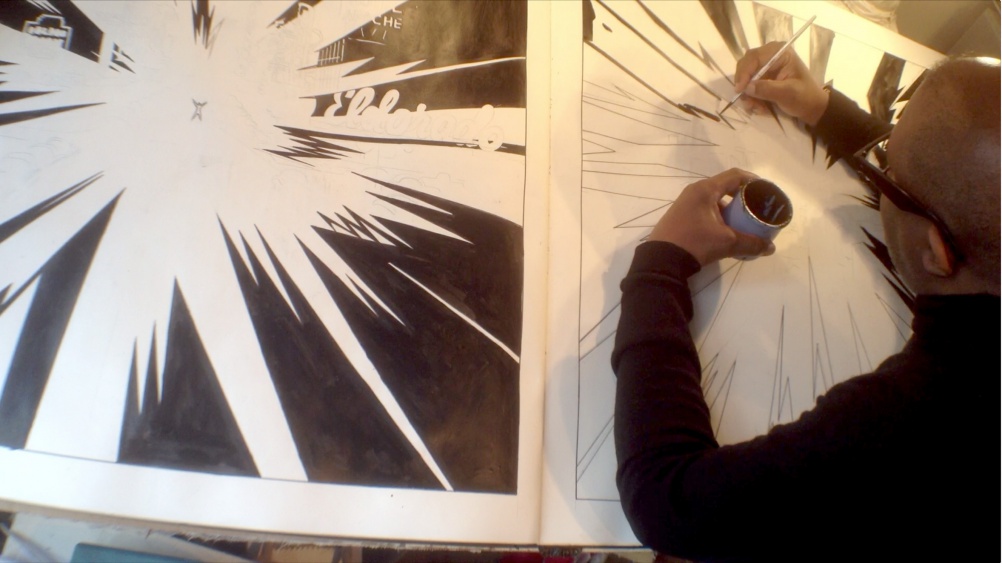
What would be your dream job or project?
Creating things like She Lives IS my dream job. Writing and drawing for a living, bringing ideas into the world and making them real, there isn’t anything more interesting than that. My work has enabled me to travel all over the world, to places I would not have seen if not for these things I have made.
For my book Plastic Culture (Kodansha, 2006), an examination of the designer vinyl toy market, I spent a month in Tokyo interviewing people like Takashi Murakami and Yoshitomo Nara. I see the research that I did for that book cited in lots of other publications now. The issues tackled in Rumble Strip have taken me to India to talk about it and also to Spain and Argentina. So it’s good to remind myself of those things when I’m having a bad day.
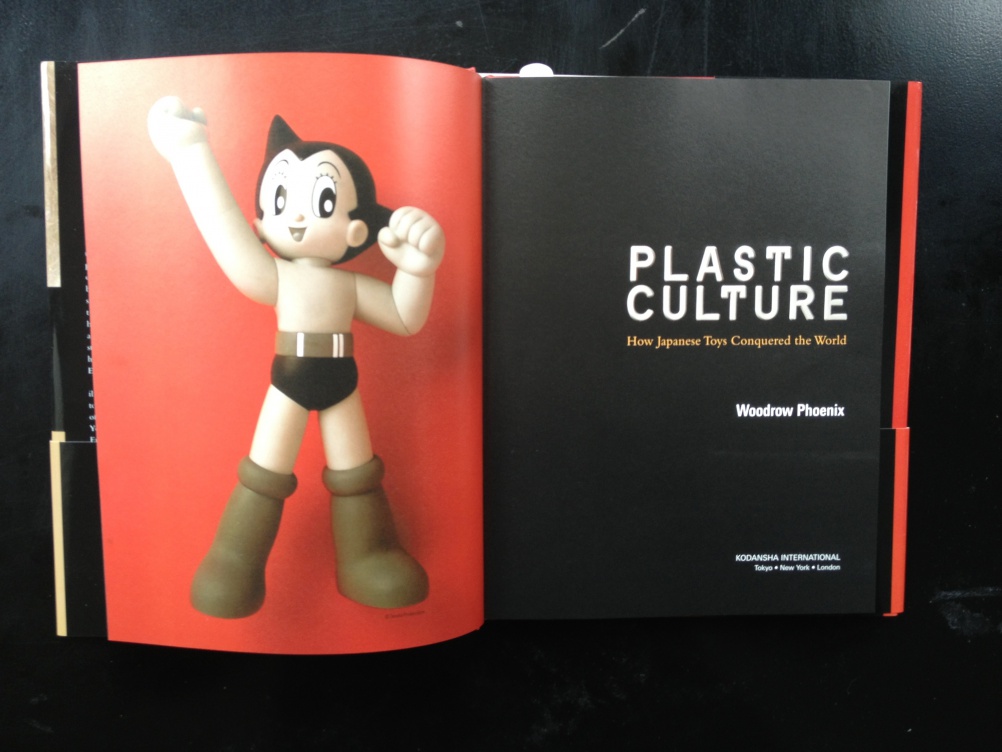
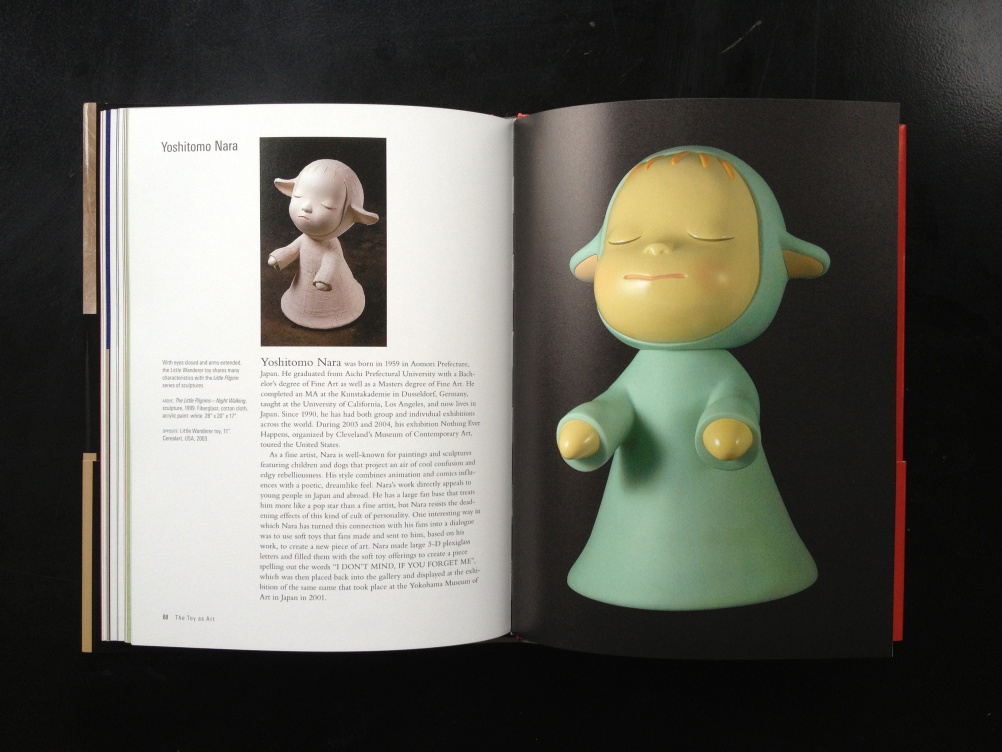
Please name some people in your field that you believe deserve credit or recognition, and why.
Kyle Baker, always trying new things, always funny, always pushing. The juice of genius flows through his veins, and his pen. Ronald Wimberley, superb stylist and intelligence to burn. Madeline Flores, unstoppable genre-busting fun. Tiffany Ford, who doesn’t draw many comics, but ought to, because her daily comics are superb. Craig Conlan deserves to be huge, I know it’s just a matter of time. Dilraj Mann, who is just extraordinary.
What’s your best piece of advice for those wanting to follow in your footsteps?
Everyone has ideas. But ideas are worthless unless you actually do something with them. If you’re interested in comics, the best thing about them is that you don’t need any tools apart from something to draw on and something to draw with. That’s it.
So if you think you might have something to say, stop wasting time telling your friends all about your great ideas that you’re definitely going to do something with. Just get drawing and make your strip. It doesn’t have to be perfect. Just keep going until it’s finished and if you don’t like the result then you’ve learned something, so now you can do it again and fix those things.
Don’t put work on hold until you feel ready to tackle it, because you’ll never be completely ready. There’s always a reason to wait. You have to push through that and just get on with it. It’s completely normal to procrastinate and feel like you don’t know what you’re doing and other people write or draw much better than you, blah blah. But there’s no magic to creating comics. It’s just one page then another page then another page, and you can do that. So, get started!
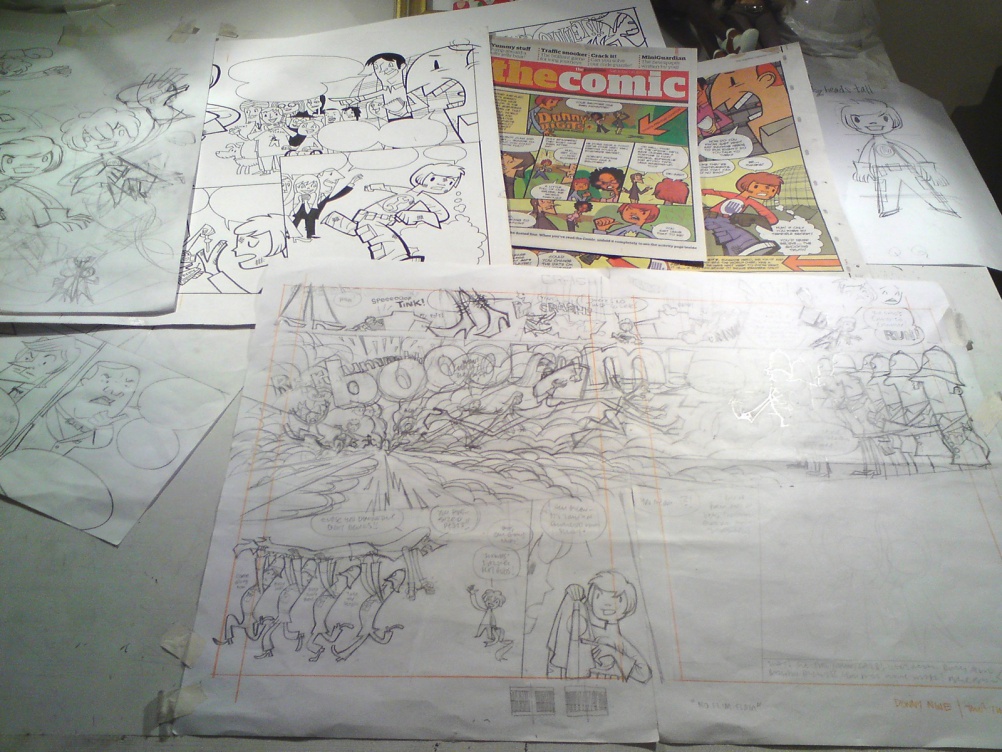
For more information visit: www.woodrowphoenix.co.uk.
Network:
EUROPE:
Tiwani Contemporary is pleased to announce AFRICAN INDUSTRIAL REVOLUTION, a project by e-studio Luanda. e-studio Luanda is an artist collective and studio complex founded in 2012 in the Angolan capital by Francisco Vidal, Rita GT, António Ole and Nelo Teixeira. A.I.R. will be the collective’s first exhibition in the UK, taking the form of an open studio within Tiwani Contemporary’s space. The overall aim of the project is to release a work of art directly into a system that depends on digital and analog ideas around free reproduction and distribution, investigating how information is disseminated today. Follow the artists’ blog http://africanindustrialrevolution.com/ for daily updates on their work-in-progress. Runs until 15 August 2015
THE CARIBBEAN:
The National Gallery of Jamaica’s Last Sundays programme for July 26, 2015 will feature the much-anticipated artists’ talks to accompany its current exhibition EXPLORATIONS 3: SEVEN WOMEN ARTISTS which invites viewers to reflect on the role and status of women in the Jamaican art world. Participating artists will include Miriam Hinds-Smith, Amy Laskin, Prudence Lovell and Berette Macaulay, who will speak about their work and the issues that surround it, in the context of local and global debates about the role and advancement of female artists in the art world. Show runs until 8 August 2015
THE U.S:
The Studio Museum in Harlem is proud to present STANLEY WHITNEY: DANCE THE ORANGE, the first New York City solo museum exhibition of the work of a painter (born Philadelphia, 1946) whose intensely color-based abstractions have won steadily mounting recognition since the mid-1990s. The exhibition will feature twenty-eight paintings and works on paper created between 2008 and 2015, including the 2013 title work. Following time spent in Italy and then later in Egypt in the mid-1990s, Whitney developed the weighty, almost architectural approach that has now become his signature style. Rhythmic and lyrical, with a combination of pre-ordained structure and improvisation inspired in part by his love of jazz, the square-format paintings arrange rectangles of vivid, single colors in a deliberately irregular grid, with the close-fitting, many-hued “bricks” or “tiles” stacked vertically and arrayed in horizontal bands. Exhibition runs until 25 October 2015
AFRICA:
Having launched in August 2014, 100% DESIGN SOUTH AFRICA is a high-end curated showcase of the most inspirational designs and designers. Set to take place alongside Decorex Joburg each year, 100% Design South Africa is the perfect platform for South African and international furniture, lighting, interiors, fabrics and product design, covering the residential, hospitality and office industries. This year 100% Design takes place from 6 – 10 August 2015 at Gallagher Convention Centre, Joburg.
If you have any forthcoming events that you would like to be considered for inclusion in this column, please do not hesitate to contact me by email at info at jon-daniel dot com.
———————————————————————————————
Jon Daniel is a London-based independent creative director, designer and curator. For more information visit his website at www.jon-daniel.com or his blog at www.visual-intellectual.com.





So inspirational, must stop procrastinating and start drawing.